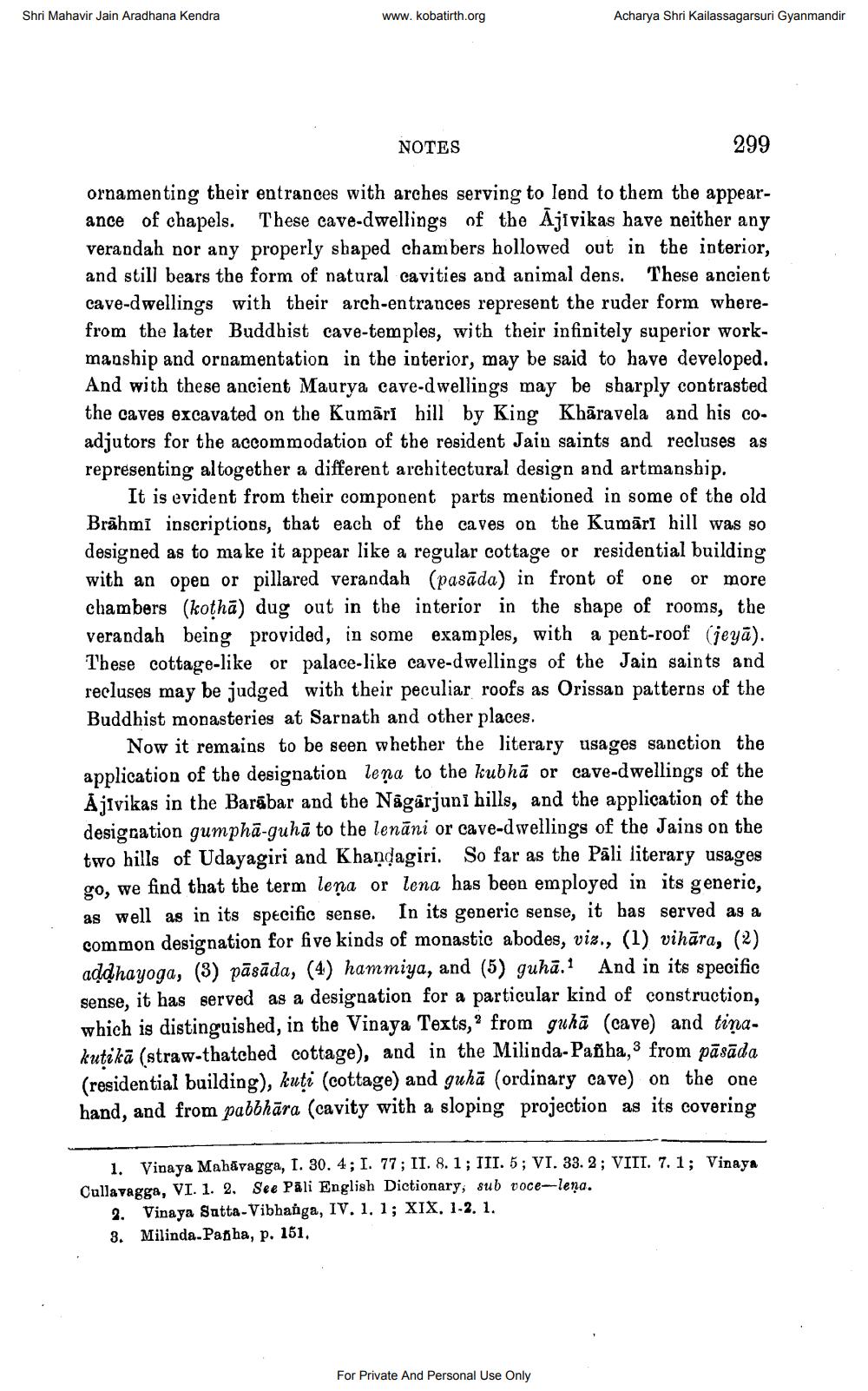________________
Shri Mahavir Jain Aradhana Kendra
www.kobatirth.org
Acharya Shri Kailassagarsuri Gyanmandir
NOTES
299
ornamenting their entrances with arches serving to lend to them the appearance of chapels. These cave-dwellings of the Ājivikas have neither any verandah nor any properly shaped chambers hollowed out in the interior, and still bears the form of natural cavities and animal dens. These ancient cave-dwellings with their arch-entrances represent the ruder form wherefrom the later Buddhist cave-temples, with their infinitely superior workmanship and ornamentation in the interior, may be said to have developed. And with these ancient Maurya cave-dwellings may be sharply contrasted the caves excavated on the Kumāri hill by King Khāravela and his coadjutors for the accommodation of the resident Jain saints and recluses as representing altogether a different architectural design and artmanship.
It is evident from their component parts mentioned in some of the old Brāhmi inscriptions, that each of the caves on the Kumāri hill was so designed as to make it appear like a regular cottage or residential building with an open or pillared verandah (pasāda) in front of one or more chambers (kotha) dug out in the interior in the shape of rooms, the verandah being provided, in some examples, with a pent-roof (jeyā). These cottage-like or palace-like cave-dwellings of the Jain saints and recluses may be judged with their peculiar roofs as Orissan patterns of the Buddhist monasteries at Sarnath and other places.
Now it remains to be seen whether the literary usages sanction the application of the designation leņa to the kubhā or cave-dwellings of the AjIvikas in the Barabar and the Nagarjuni hills, and the application of the designation gumpha-guhā to the lenāni or cave-dwellings of the Jains on the two hills of Udayagiri and Khandagiri. So far as the Pāli literary usages go, we find that the term leņa or lena has been employed in its generic, as well as in its specific sense. In its generic sense, it has served as a common designation for five kinds of monastic abodes, viz., (1) vihāra, (2) addhayoga, (3) pāsāda, (4) hammiya, and (5) guhā.1 And in its specific sense, it has served as a designation for a particular kind of construction, which is distinguished, in the Vinaya Texts,” from guhā (cave) and tiņakutikā (straw-thatched cottage), and in the Milinda-Panha, 3 from pāsāda (residential building), kuti (cottage) and guha (ordinary cave) on the one hand, and from pabbhāra (cavity with a sloping projection as its covering
1. Vinaya Mahāvagga, I. 30. 4; I. 77; II. 8.1; III. 5; VI. 33. 2; VIII. 7. 1; Vinaya Cullavagga, VI. 1. 2. See Pali English Dictionary, sub voce-lena.
2. Vinaya Sutta-Vibhanga, IV. 1.1; XIX. 1-2. 1. 3. Milinda-Papha, p. 151.
For Private And Personal Use Only




